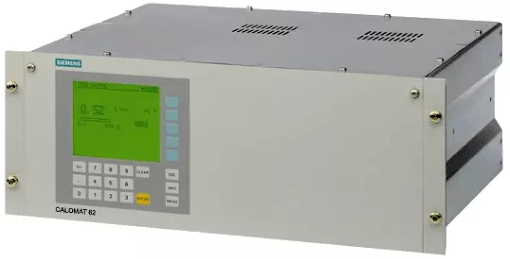Chemical gas analyzers

What are chemical gas analyzers?
In general, gas analyzers are devices that measure the volumetric composition of a gas mixture. Their first models were mechanical and operated manually. They were used exclusively in laboratory conditions and, in fact, were a set of absorption, measuring and equalizing vessels connected by rubber tubes and equipped with taps.
Any modern chemical gas analyzer is already a high-precision device, often portable. Its components are placed in a reliable case. For quick and easy reading of readings, it is equipped with indicators and, as a rule, can function in automatic mode.
How does a chemical gas analyzer work?
The operating principle of chemical gas analyzers is quite simple:
- the component of the analysis (or several substances at once) is removed from the mixture;
- then the extent to which the volume of the gas sample has decreased is measured.
The required component is removed from the mixture by selective absorption (only it is removed). But also, depending on the substance being studied, the selective afterburning method can be used.
Modern chemical gas analyzers are quite versatile devices; so much so that some of their models are capable of measuring up to 8 components simultaneously, for example, the concentration of benzene, formaldehyde and ammonia in the air at once in one working cycle.
Portable and/or stationary models work with pre-selected samples. But portable chemical gas analyzers are already capable of measuring the concentration of substances directly, in a direct way. Such devices are equipped with a built-in pump, with the help of which they collect the working environment. Accordingly, they perform well in field conditions, when conducting express analyses as part of a set of measures for environmental and sanitary-hygienic control of the environment.
Where is it used?
Depending on the model and version, chemical gas analyzers can be used at the following facilities:
- Laboratories — to process pre-selected samples;
- Gas, oil, mining, power engineering and metallurgy enterprises — to determine pollutant concentrations;
- Poorly ventilated areas — portable chemical gas analyzers are used to monitor the air environment and promptly detect smoke and fires;
- Vacuum units — to quickly detect depressurization;
- Thermal power plant boilers — to determine optimal combustion parameters;
- Hygiene, environmental control and epidemiology centers — chemical gas analyzers assess air purity;
- Explosive areas, aircraft and shipboard — to monitor personnel working conditions;
- Rail and road transport environmental services — to assess the concentration of toxic substances and pollutants from exhaust gases.
The list of objects that require chemical gas analyzers does not end there. This equipment is also used in a variety of indoor and outdoor areas. And its scope of application is only expanding with the advent of new models.
What are the advantages of a chemical gas analyzer?
Much depends on the design features and series of the device. But in general, modern chemical gas analyzers have an impressive list of advantages. Among the most significant advantages in practice are:
- Liquid crystal display with clear digital indication of measurements.
- Alarm (light, sound, combined) when reaching the set concentration limit, with the ability to set threshold values.
- Ease of calibration - you can often set chemical gas analyzers "to zero" or adjust them even in the field, directly at the facility.
- Indication of all necessary values - type of environment, units of measurement, limits, both in real time and with recording in the archive.
It is worth mentioning separately that modern chemical gas analyzers are easy to learn and convenient to operate. They are manufactured in reliable cases, well protected from external influences. These are devices with a certain range of versatility, and they are relatively cheap.
How to choose a chemical gas analyzer?
It will be easier to buy a truly suitable model of a chemical gas analyzer if you think about it and answer a few questions.
Why do you need a chemical gas analyzer, where will it be used, what is its purpose? Decide on what objects you will definitely or possibly use the device. Be sure to take into account the expected operating conditions. Think about the concentration of which substances it should determine. You will see that at this stage the range of suitable models will seriously narrow.
Question two: with what accuracy should chemical gas analyzers work at your site? There are cases in which even minor changes in concentration are already critical and therefore must be immediately recorded and clearly displayed on the display. If this is exactly your situation, you will need the most functional devices with a wide scale (even if their purchase will cost a pretty penny); if not, and the requirements for measurements are not so high, you can get by with simpler and more budgetary models.
Question three: what design should chemical gas analyzers have so that you can use them with convenience? The form factor and the nature of the equipment operation are very closely related things. If you plan to conduct analyses in laboratory conditions or, for example, constantly in the same room, stationary control devices are better suited. If you are going to go with the device to various sites, you need to buy a portable device.
Regarding the performer and price: trust well-known brands, do not try to save on the name. And remember - really good chemical gas analyzers, like any precise and modern equipment, simply cannot be cheap.
We hope that these tips will help you make the right choice. Buy only those chemical gas analyzers that suit you both in purpose and in form factor, and also, of course, ensure the accuracy of measurements. Finding exactly such models, given the current variety of control and measuring devices, is quite realistic.
